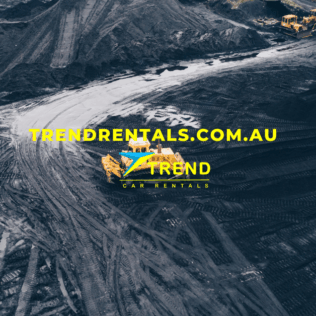Mining operations across Australia are some of the most regulated and safety‑conscious industries in the world. Whether you’re operating in the Pilbara, the Bowen Basin, the Hunter Valley, or South Australia’s copper belt, one thing remains consistent: standard road‑legal vehicles are not enough for mine sites.
That’s where mine spec vehicle fit‑outs come in. These modifications transform everyday utes, 4WDs, and light commercial vehicles into compliant, safe, and site‑ready machines. But here’s the catch: not every fit‑out is mandatory everywhere. Some requirements are universal, while others vary by state, site, or even contractor.
In this guide, we’ll break down:
- What mine spec vehicles are and why they matter
- The mandatory fit‑outs you’ll need across Australia
- The optional or site‑specific extras that may be requested
- State‑by‑state compliance differences (NSW, WA, QLD, VIC, SA)
- How to choose between buying vs renting a mine spec vehicle
- Practical tips for staying compliant without overspending
For further detail on compliance requirements, you can also explore Trend Rentals’ comprehensive guide to mine spec vehicle requirements.
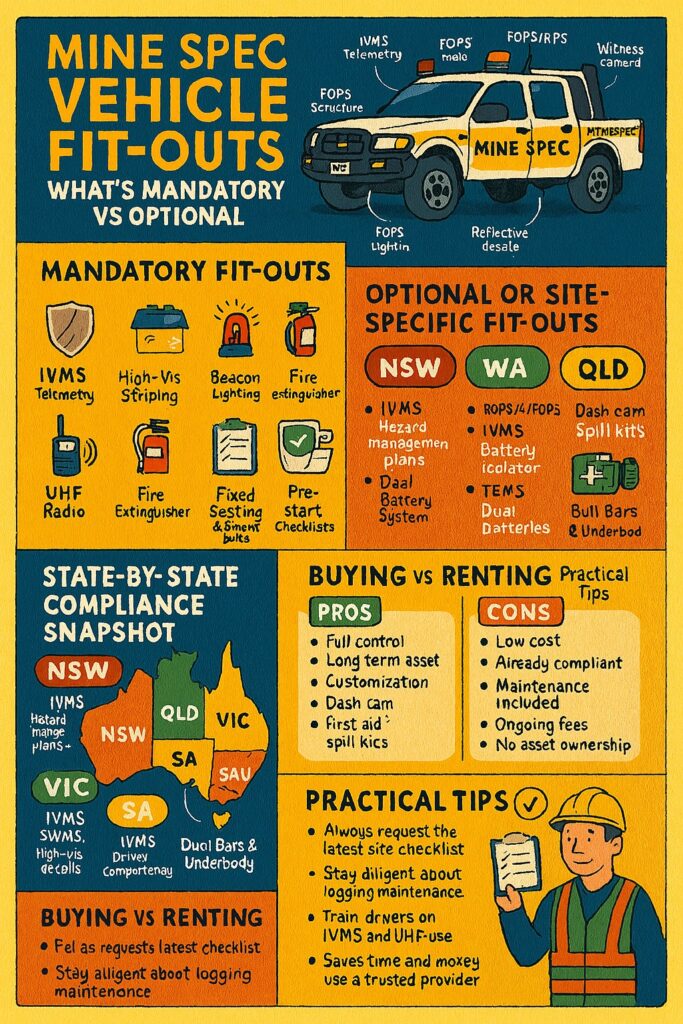
What Is a Mine Spec Vehicle?
A mine spec vehicle is a light vehicle (typically a ute, dual cab, or 4WD wagon) that has been modified with additional safety, communication, and compliance equipment to meet the strict standards of mining and resource sites.
These modifications are designed to:
- Protect drivers and passengers in hazardous environments
- Ensure visibility and communication on busy mine sites
- Reduce the risk of fire, rollover, or collision
- Provide traceability and accountability through monitoring systems
In short, mine spec vehicles are about safety, compliance, and productivity.
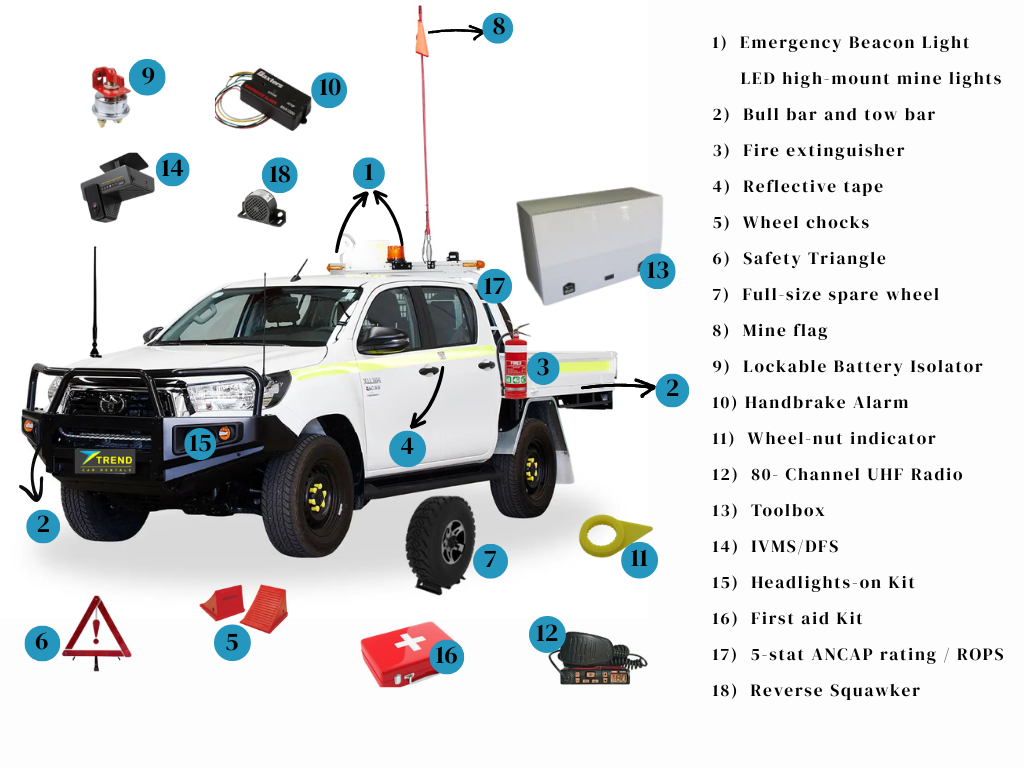
Mandatory Fit-Outs: The Non‑Negotiables
While each mine site may have its own checklist, there are several core fit‑outs that are almost universally required across Australia.
1. Rollover Protection (ROPS) and Falling Object Protection (FOPS)
- Why: Mines are high‑risk environments where rollovers and falling debris are common hazards.
- Mandatory: In WA, QLD, and most large open‑cut mines.
- Equipment: Certified ROPS/FOPS frames or cages integrated into the vehicle.
2. In‑Vehicle Monitoring System (IVMS)
- Why: Tracks driver behaviour, speed, fatigue, and location.
- Mandatory: Required in NSW, WA, and QLD; increasingly standard nationwide.
- Equipment: GPS‑enabled telemetry units with reporting capability.
3. High‑Visibility Markings and Signage
- Why: Vehicles must be visible in dusty, low‑light, or high‑traffic conditions.
- Mandatory: Across all states.
- Equipment: Reflective striping, company logos, vehicle ID numbers.
4. Beacon and Lighting Systems
- Why: Alerts others to vehicle movement.
- Mandatory: Amber rotating or flashing beacon required on all mine sites.
- Equipment: Roof‑mounted beacon, additional work lights, reverse alarms.
5. UHF Radio (Site Frequency)
- Why: Enables communication with site control and other vehicles.
- Mandatory: Across all states.
- Equipment: Fixed‑mount UHF with pre‑programmed site channels.
6. Fire Extinguisher / Fire Suppression
- Why: Mines are high‑risk fire zones.
- Mandatory: At least one 1kg or 1.5kg extinguisher mounted in cabin.
- Equipment: Bracket‑mounted extinguisher, sometimes dual units.
7. Battery Isolator / Kill Switch
- Why: Allows safe shutdown during maintenance or emergencies.
- Mandatory: In WA, QLD, and most large operators.
- Equipment: External battery isolator with clear signage.
8. Seatbelts and Fixed Seating
- Why: Loose seating is unsafe in rough terrain.
- Mandatory: Across all states.
- Equipment: ADR‑compliant fixed seating with 3‑point belts.
9. Pre‑Start Checklists and Maintenance Records
- Why: Ensures vehicles are safe before entering site.
- Mandatory: All states.
- Equipment: Logbooks, digital checklists, inspection tags.
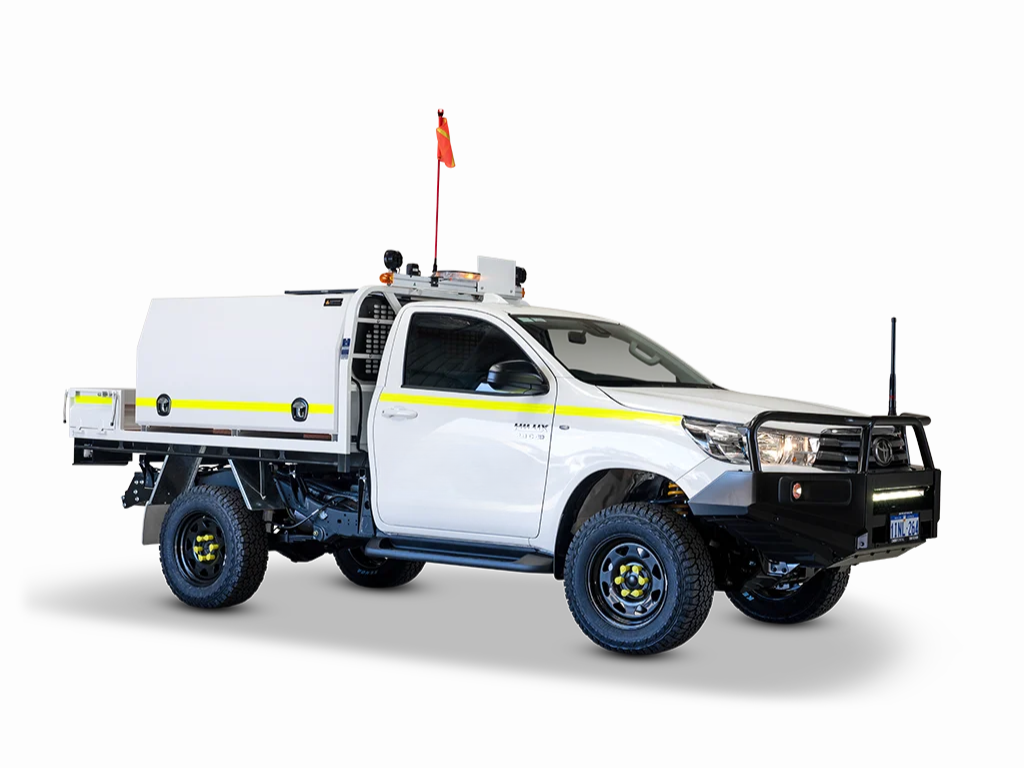
Optional or Site‑Specific Fit-Outs
Not every site requires the same extras. Some modifications are optional or only mandated by certain operators.
1. Handbrake Alarms
- Where: Common in QLD coal mines.
- Purpose: Alerts driver if handbrake not engaged.
2. Collision Avoidance Systems
- Where: VIC and some Tier‑1 operators.
- Purpose: Radar or sensor‑based systems to prevent accidents.
3. Dual Battery Systems
- Where: Remote WA and SA sites.
- Purpose: Supports radios, lights, and IVMS without draining starter battery.
4. First Aid Kits and Spill Kits
- Where: Optional but recommended everywhere.
- Purpose: Emergency preparedness.
5. Tyre Pressure Monitoring Systems (TPMS)
- Where: Remote desert operations.
- Purpose: Prevents blowouts and downtime.
6. Dash Cameras / Witness Cameras
- Where: Increasingly common across NSW and WA.
- Purpose: Incident recording and accountability.
7. Bull Bars and Underbody Protection
- Where: Remote exploration sites.
- Purpose: Protects against animal strikes and rough terrain.
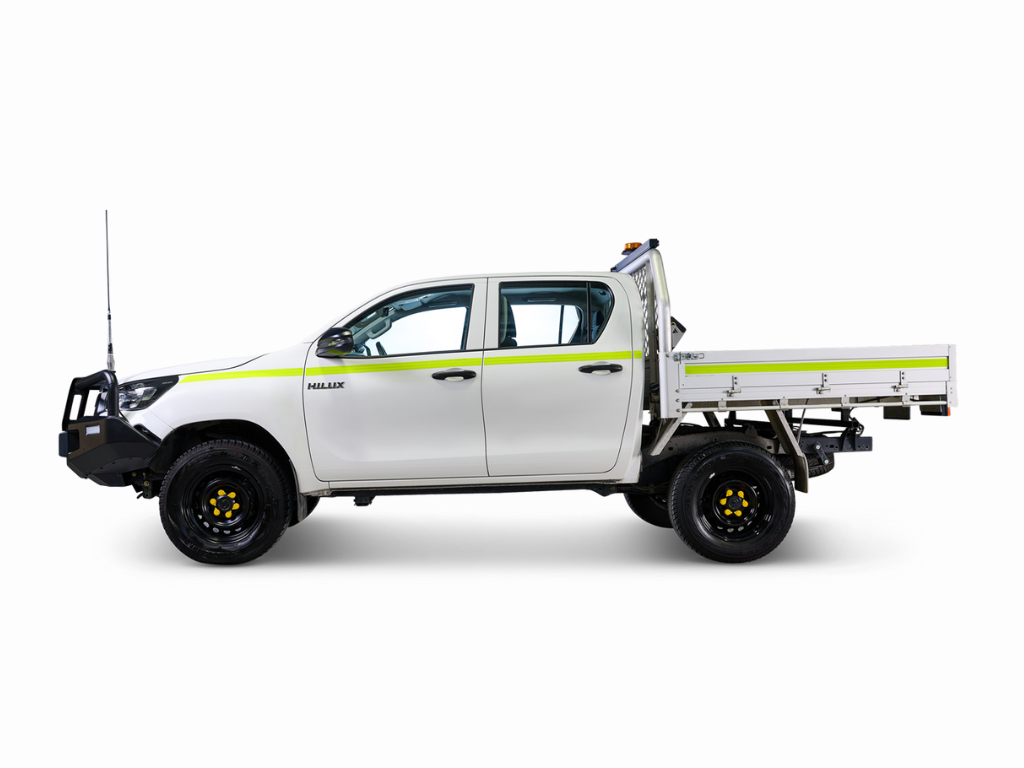
State‑by‑State Compliance Snapshot
For a deeper dive, see Trend Rentals’ state compliance guide.
| State | Key Mandatory Fit‑Outs | Common Optional Extras |
|---|---|---|
| NSW | IVMS, hazard management plans, driver competency proof | Dash cams, spill kits |
| WA | ROPS/FOPS, IVMS, battery isolator | Dual batteries, bull bars |
| QLD | IVMS, ROPS/FOPS, handbrake alarms | TPMS, dash cams |
| VIC | IVMS, SWMS, high‑vis decals, collision avoidance | Spill kits, cameras |
| SA | IVMS, ROPS/FOPS, driver competency tickets | Dual batteries, underbody protection |
Buying vs Renting a Mine Spec Vehicle
One of the biggest decisions is whether to buy and fit‑out your own vehicle or rent from a specialist provider like Trend Rentals.
Buying
- Pros: Full control, long‑term asset, customisation.
- Cons: High upfront cost, ongoing compliance updates, downtime risk.
Renting
- Pros: Lower upfront cost, vehicles already compliant, flexible fleet size, maintenance included.
- Cons: No asset ownership, ongoing rental fees.
For contractors or short‑term projects, renting is often the smarter choice. For long‑term operators, buying may pay off — but only if you can keep up with compliance changes.
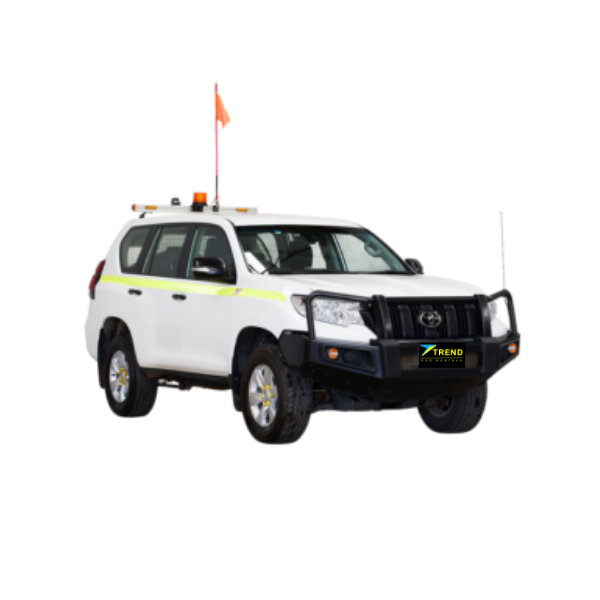
Practical Tips for Staying Compliant
- Always request the site’s latest vehicle compliance checklist before mobilising.
- Don’t assume one site’s spec equals another’s — even within the same state.
- Keep maintenance logs up to date — inspectors will check.
- Train drivers on IVMS and UHF use — equipment is only as good as its operator.
- Work with a trusted provider like Trend Rentals to ensure vehicles are fit‑for‑purpose.
Conclusion
Mine spec vehicle fit‑outs are not just about ticking boxes — they’re about protecting lives, ensuring compliance, and keeping projects moving.
- Mandatory fit‑outs like ROPS/FOPS, IVMS, beacons, radios, and fire extinguishers are non‑negotiable.
- Optional extras like handbrake alarms, collision avoidance, and dual batteries may be required depending on site and state.
- Compliance varies by state, so always check the latest requirements.
- Renting from a specialist provider can save time, money, and headaches.
